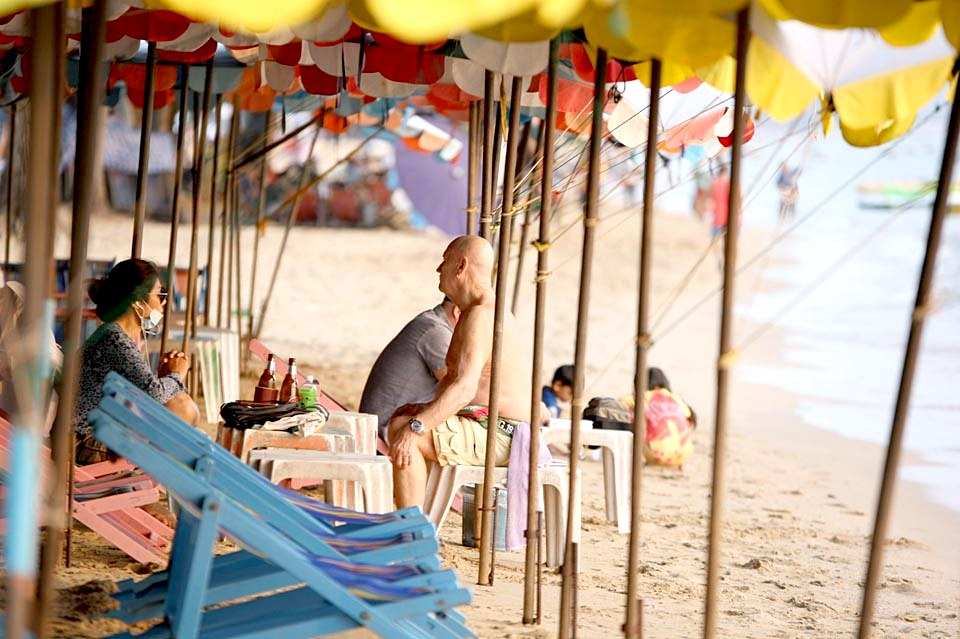
Thailand regularly appears in the top ten destinations chosen by foreigners wanting to retire abroad. Unlike other south east Asian countries, Thailand does not offer a retiree visa as such but a number of choices aimed specifically or partially at this market.
Non-immigrant “O” visa conversion
This is the most popular route at present. A foreigner aged at least 50 enters the country with a visa exempt or tourist visa (30 or 60 days) and applies at local immigration to convert it to a three months non-immigrant “O” and thence to an annual extension of stay based on retirement. Typically, the financial requirement is 800,000 baht in a Thai bank or proof of monthly transfers to Thailand of at least 65,000 baht. The detailed bureaucracy varies in immigration offices nationwide and several embassies now refuse to get involved in certifying the creditworthiness of their own nationals.
One big attraction for many of the non-immigrant “O” route is that, to date, medical insurance is not required and the paperwork is fairly straightforward. A foreigner with a foreign spouse will be treated as separate individuals and both must provide the financial guarantee. When leaving the country, re-entry permits must be obtained and the 90 days address reporting is in play. Applicants who are short of cash at the time of application or annual renewal are not forbidden from “borrowing” cash from third parties as the check is only on the amounts in the applicant’s bank book. The cost of the visa is 1,900 baht (US$60) assuming no extras have been accumulated along the way.
Non-immigrant “O/A” long stay visa
This is a 12 months visa offered by Thai embassies abroad to retiree applicants, with or without a multiple entry built in. The financial requirements are similar to the “O” extension of stay, but there are additional documents such as a medical certificate illustrating freedom from certain diseases. The visa can be renewed annually at Thai immigration offices. The big problem with the O/A option is that comprehensive medical insurance is required from day one and continues with every annual extension. The Thai Cabinet authorized an annual sum of US$100,000 or 3 million baht. Many retirees have tried to get rid of their O/A and change to “O” extension of stay, but this cannot be done without leaving the country and altering visa status overseas. The cost of OA annually is 1,900 baht (US$60) assuming all the documentation is in order.

“O/X” ten year retiree visa
This little-known option was introduced in late 2016 and offered a ten year multiple entry stay (actually 5×2 years) to retirees aged at least 50 in 14 countries including UK, US, Australia and some EU states. It was available at Thai embassies abroad and at immigration offices in Thailand. The visa never became airborne as the bureaucracy was complex, requiring a crime-free certificate from the home country and an investment of 3 million baht in a Thai bank. Options were available to include spouses and dependent children in the visa allocation. However, the visa did specify that working as a volunteer was OK although no detail was set out. Neither the immigration bureau nor the Thai Cabinet ever issued updates on the visa which is usually assumed to have been stillborn. The fee was 10,000 baht.
The Elite visa
Current enrolments are said to be around 30,000 all told. The Elite visa is not specifically aimed at retirees and there are no age bars. Although there are several variants, the most popular option is the five years, multi-entry choice currently available for a one-off payment of 600,000 baht and renewable. 10 and 20 year options with family guarantees are also available. Attractions for the retiree market include no need for medical insurance and no requirement to show updated bank account details every year. The visa also includes some special privileges such as fast-track at Thai airports which has been favorably reported by customers, particularly in the past year or so.
Long Term Residence
Introduced in 2022 by the Board of Investment, the LTR is a 10 year open visa designed to attract high spenders and investors from overseas. The four categories do include one specifically aimed at retirees over 50 which has so far attracted over 1,000 initial applications (32 percent of the total). The wealthy pensioner is expected to show a substantial regular income as well as evidence of investment such as Thai property or Thai bonds. All LTR applicants must show medical insurance. The overall idea is to encourage settlement by foreign millionaires. The LTR has not attracted the international interest originally anticipated and is perhaps best suited to economic experts and investors keen to take advantage of generous tax breaks. The enrolment fee is 50,000 baht and reporting to immigration is once a year rather than three-monthly.
Conclusions
For retirees, the cheapest and most flexible option is the annual extension of stay, although the Elite visa with its initial down payment and no further financial checks is increasingly being seen in a favorable light. The LTR and the stillborn “O/X” both suffer from complex enrolment bureaucracy and neither offers significant advantages to foreign retirees. None of the visas avoid the need for a work permit for regular employment, although side issues such as being a member of a condominium committee or helping to organize occasional sports or entertainment activities are no longer seen as breaches of the alien labour act. The biggest unknown is the future of medical insurance as a compulsory element in applications. At present, the most popular routes for retirees aged over 50 – the non immigrant “O” and Elite choices – have no such requirement. If that policy was changed and enforced, the proverbial cat would certainly appear amongst the pigeons. Older retirees are the expats whom insurance companies most want to avoid.






